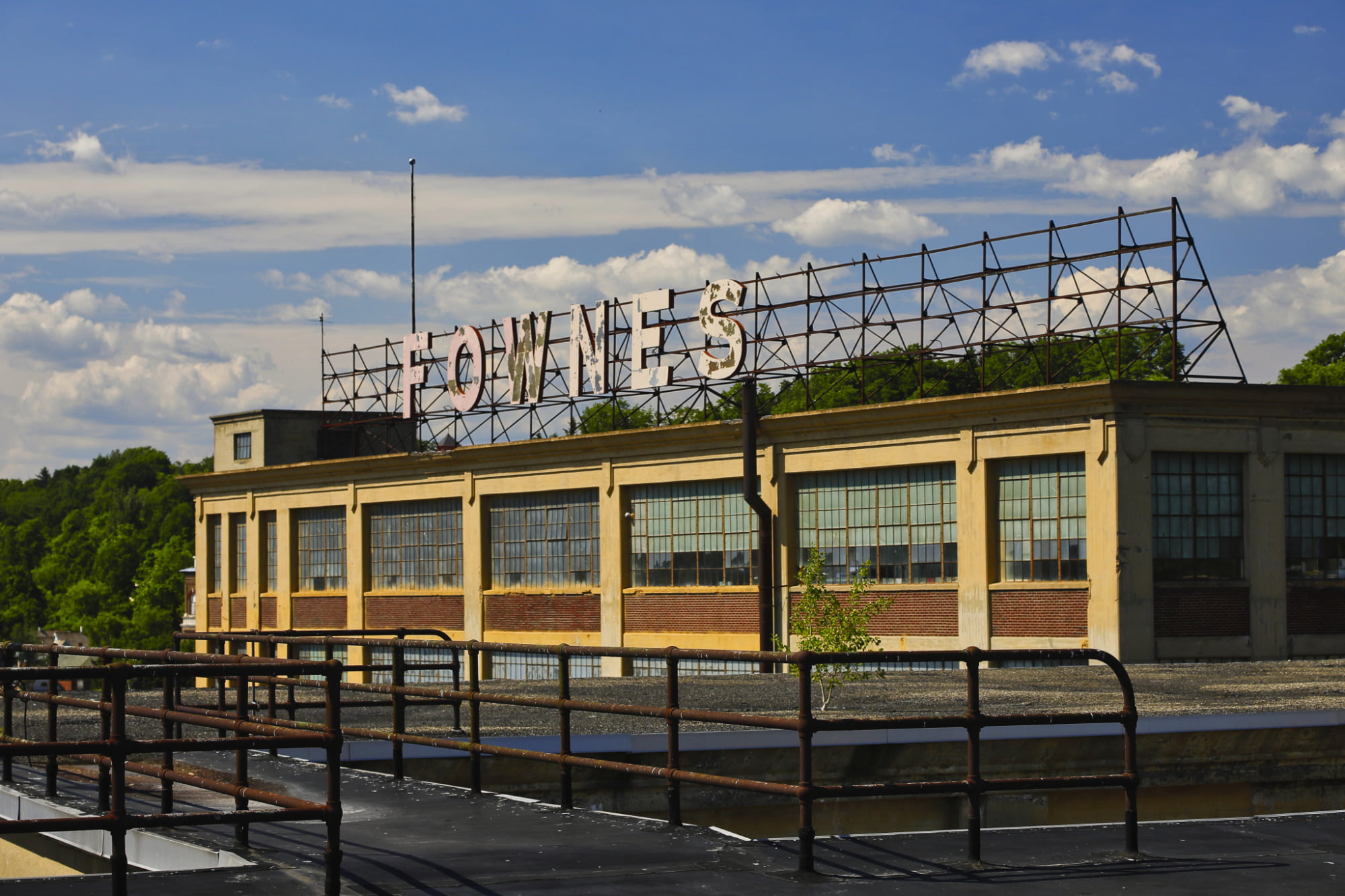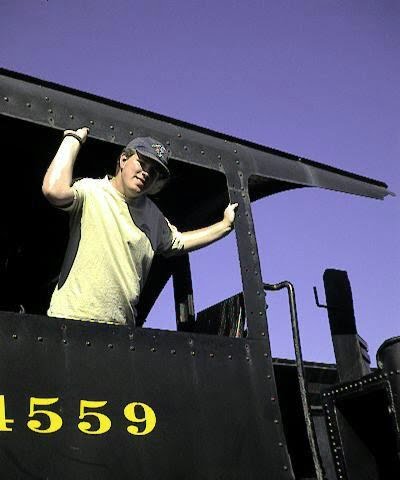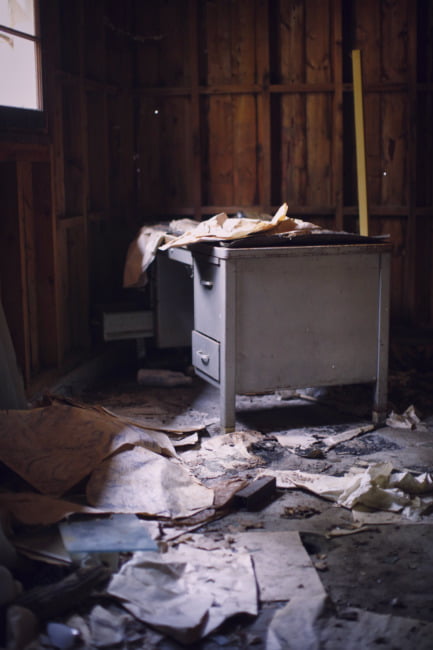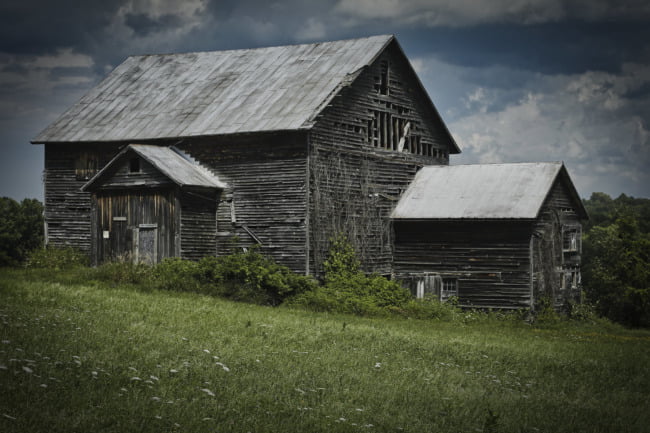When I was eight years old, my family moved from New York City to a small town in Upstate New York. At first, I hated living in this small town and all the changes that came with it. But as I got older, I began to love my new life there, especially the quiet and the abundance of open space.
My interest in photography was spawned from my fascination with abandoned buildings and urban exploration. A lot of people often wonder why someone would want to go into a creepy old building, but they’re missing the point—I don’t go there to be scared, I go because I like the way it makes me feel; it’s an art form. Abandoned places are like walking into a beautiful painting – there are so many details and variations that you’ll never see them all in one visit, and the next time you come back, everything might be completely different.
A lot of people wonder why I choose to shoot abandoned locations. Some even ask me if it is an attempt to somehow expose those who are unable to care for or maintain these structures. The simple answer is no, I’m not doing either of those things. There is something about a building that has seen better days that pulls me in and sparks my creativity. This makes sense when you consider that many abandoned buildings are snapshots of a certain time period or culture—as such, they can give us an insight into our history and who we were as a society during those times. It’s hard to resist being inspired when there is so much beauty in decay.
It wasn’t until much later in my life that I realized that my inspiration was a coping mechanism of sorts as a result of my life long struggles with feeling abandoned since early childhood. At night when I was tucked into bed, my parents promised me that they would always take care of me, and that in life I would never have anything to worry about.
As soon as I turned the age of ten, my parents sent me away to summer camp for the first time, which I despised. The camp itself ended up being a cover for a religious cult. The following year, they sent me to a different summer camp, which I ended up falling in love with.
At age 15, my parents sent me away to a boarding school in Western New York, in addition to summer camp. I suffered through almost constant abuse in boarding school, and constantly being away from my nest left me with an overwhelming feeling of abandonment from such an early age. This feeling continues to haunt me today and has ultimately inspired my artistic style in photography.
My interest in abandonment photography came about unexpectedly. While in college, there was an abandoned medical center on the university campus. The building was massive, and a lot of medical equipment was left behind, but unfortunately, gaining access to the facility was impossible. My friend at the time grew up nearby and he would introduce me to a multitude of interesting characters, and I was able to visit some seedy locations that had a very vintage abandonment appeal.
From natural decay to man-made ruins, a peculiar beauty emerges as surroundings fall apart and return to nature. Such decay is even more captivating when juxtaposed with vibrant colors or unique architecture. Accordingly, I set out to capture a photographic style that reflects my fascination with both abandoned places and vintage aesthetics, a visual concept fueled by nostalgia for things once thought beautiful—and still alive in our memories. By merging derelict locations and discarded objects from around America, my goal is to create pictures that document not only those forgotten places but also time itself.
Although I wouldn’t say that sadness is my favorite emotion, it has served me in a very positive way. The longer I look at images, either my own or those of other photographers, that aren’t emotional, I often get bored. Photography allows one to capture emotion with their mind and their camera. There are many types of emotions that can be captured and utilized in a single image. This includes beauty, fear, anger, joy, or any combination thereof. It all depends on your photographic style and vision as an artist but also ones life experiences.
I love to shoot in abandoned or run-down locations, but I don’t think of them as deteriorated—instead, I see their run-down state as an opportunity for photographing things that wouldn’t normally be seen. The reason is simple: In these places, you’re often seeing something only a very small fraction of people have ever seen before. These are places that people don’t often think about, and of course, never have the desire or opportunity to visit. As far as photography is concerned, I find this fact to be very exciting. It means I’m able to create truly unique photos with angles and viewpoints no one else can get because they don’t know about these places yet.
What’s on a property that could inspire such a feeling? Why is it so interesting to me? Is it because I’m drawn to a certain aesthetic, or is there something deeper at play? I’ve never been able to nail down a definitive answer, and maybe that’s okay. For now, I just want to continue seeking out these forgotten places for as long as possible. The more I photograph them, though, the more certain elements begin to emerge from each shot—in what seems like a playful yet eerie way. It’s both charming and creepy all at once.
There are a lot of really great websites to find abandoned locations. Google Earth has also been very helpful at pointing out geographical features such as mountains, bridges, caves, waterfalls, etc. which can make for interesting shots later on. There are also websites that let you type in your zip code and will tell you about old hospitals or military bases nearby that have been closed down. They aren’t always up-to-date with information, though, and sometimes the information isn’t factual, so it’s best to check yourself before heading out if possible!
A lot of people love being in new places, surrounded by common things, whereas I’m not one of them. I feel most comfortable when I am outside exploring and finding new places to see and photograph. Taking pictures of abandoned and forgotten locations helped me to find beauty in places and things that were discarded and forgotten which other people couldn’t care less about. These days, whenever I step into an abandoned building, a new world is revealed to me—one that’s full of mystique and wonder.
Abandoned places are oddly beautiful. As a photographer, I feel like my job is to capture that beauty for others to see. That’s why when I’m asked about my photography style, I simply say that it’s inspired by abandonment. What does that mean? In short, it means taking a careful look at an old building—whether it’s been left to rot for decades or just for a few weeks—and attempting to understand what its past inhabitants were thinking and feeling as they abandoned their lives there. From there, you can attempt to recreate those feelings with your own imagination as you create photographs of your own surroundings.
Abandoned buildings have a unique allure. There’s something fascinating about peering inside a building that’s been abandoned for years—decades even. With crumbling walls, shattered windows and decaying fixtures, it’s easy to picture what life was like when people did occupy them. All these nooks and crannies make an abandoned house a fantastic photo subject.
Photographing an abandoned building is about more than taking a picture; it is about experiencing a place, learning its history, and getting inside of its character. The buildings are ugly on their own, but there is so much that can be learned from them if we take just a little time to look around. Taking photographs of these structures allows me to be part of an ever-changing landscape and to preserve it in both time and space.
Photographing abandoned buildings also serves as a form of preservation, as the photographs themselves can document what existed at that moment, an entropic version of what once was, and in many cases, what might never be again.
I’ve been photographing abandoned buildings and locations for years. At first, it was just something to do when I wasn’t working on a commercial or personal project. But recently, my style has taken a dramatic turn; I want to share with you how my perspective has changed in recent months. Until now, most of my abandoned photography has had an emphasis on decay and damage—dark tones that reflect these structures being reclaimed by nature. My latest work is very different. It has a softer look and is more simplistic than my previous photographs. I have also grown older and as such, I am no longer taking enormous risks to my personal safety.
I love being behind a camera, but much prefer to let my subjects just be themselves and capture candid moments of their lives. That said, I do enjoy trying new things, so when I see something or someone that gets me excited, I like to incorporate it into my photography—and that’s what happened with abandoned buildings. When I saw an old hospital in shambles, complete with a full interior to explore and all sorts of textures (from peeling paint to discarded medical equipment), it seemed like too good an opportunity to pass up.
I have traveled to many abandoned places around the United States, where I have photographed buildings that have been left behind and forgotten. Whether they were due to fire or simply ran out of money, some towns just fall off of the grid. Some of the most memorable locations include The Hotel Adler in Sharon Springs New York, and its sister property, Imperial Baths, which sits adjacent to the hotel. The entrances to these locations were still filled with signs promoting its own glory, yet after walking inside, you are faced with empty rooms, some with beds and dilapidated furniture; many with old television sets and broken mirrors.
I will never forget photographing Letchworth Village Asylum in Thiells, New York. There were small patient rooms, mostly empty aside from a single bed, chair, and perhaps a small sink. The bath tubs had canvas coverings with stainless steel attachments for hydrotherapy treatments, which were common at the time. There were also rooms with outdated electroshock therapy equipment. I found a medical office strewn with patient records.
Seeing scenes such as these, and then photographing them makes me think about how far we have come as humans, or perhaps not as far as one might assume.
One day, I stumbled upon an abandoned warehouse in Amsterdam, New York, and found it strangely beautiful. The pictures I took that day stuck with me for a long time after that. It wasn’t until much later, though, that I realized what it was about those photographs that grabbed my attention so tightly. Aesthetically, they looked like any other set of photos taken at a location you might find on a list of spooky places in your area. In many ways, they even look like post-apocalyptic scenes—an image rarely considered beautiful when we think about our future on Earth.
That’s when I realized there was something eerie and interesting about photographing scenes that time has forgotten—and also that it could be fun!
Abandoned places are common subjects for photographers of all skill levels. From dilapidated buildings to uninhabited islands, there is a seemingly endless supply of photography subjects available. But in my opinion, no subject inspires adventure photographers like an abandoned structure does. Whether it’s a crumbling old house or even an entire abandoned city, I find myself drawn to these places as if there is something about them that can’t be found anywhere else.
Colophon
The images used in this post were sourced from my archives.
Asides
I Used To Be A Habitual Trespasser | The Exploration Of The Hotel Adler Spa | Imperial Baths | Fownes | Camp Chateaugay | Letchworth Village | One Eye To The Future | Poisoned By Fairy Tales | A Little Ghost For The Offering











